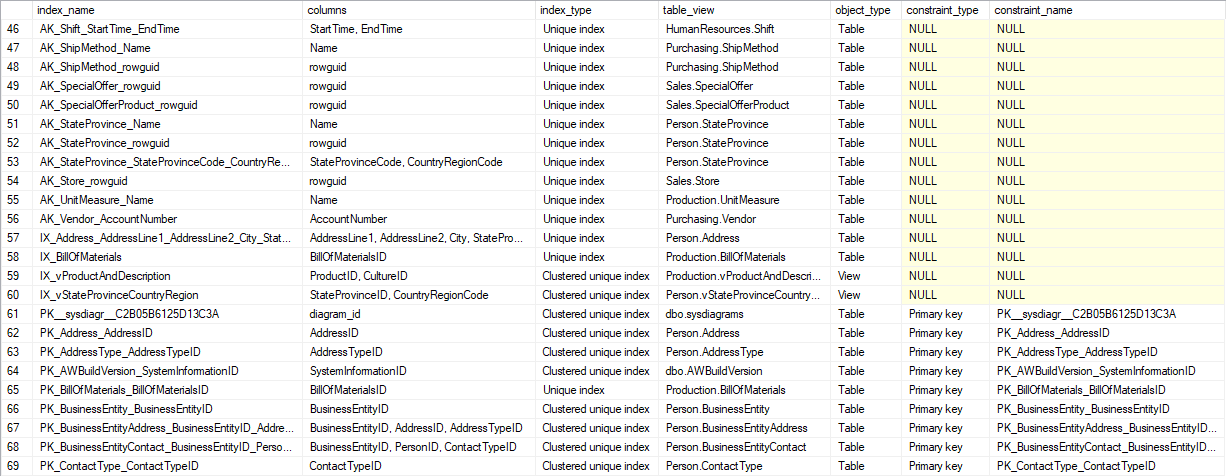Query below lists all unique indexes in the database.
Check out also list of unique constraints.
Query
select i.[name] as index_name,
substring(column_names, 1, len(column_names)-1) as [columns],
case when i.[type] = 1 then 'Clustered unique index'
when i.type = 2 then 'Unique index'
end as index_type,
schema_name(t.schema_id) + '.' + t.[name] as table_view,
case when t.[type] = 'U' then 'Table'
when t.[type] = 'V' then 'View'
end as [object_type],
case when c.[type] = 'PK' then 'Primary key'
when c.[type] = 'UQ' then 'Unique constraint'
end as constraint_type,
c.[name] as constraint_name
from sys.objects t
left outer join sys.indexes i
on t.object_id = i.object_id
left outer join sys.key_constraints c
on i.object_id = c.parent_object_id
and i.index_id = c.unique_index_id
cross apply (select col.[name] + ', '
from sys.index_columns ic
inner join sys.columns col
on ic.object_id = col.object_id
and ic.column_id = col.column_id
where ic.object_id = t.object_id
and ic.index_id = i.index_id
order by col.column_id
for xml path ('') ) D (column_names)
where is_unique = 1
and t.is_ms_shipped <> 1
order by i.[name]
Columns
- index_name - name of the index
- columns - index columns separated with ","
- index_type - type of the index
- Clustered unique index
- Unique index - non-clustered unique index
- table_view - schema and name of table or view
- object_type - type of object which constraint/index was created on
- Table
- View
- constraint_type -
- Primary key - for primary keys
- Unique constraint - for constraints created with CONSTRAINT UNIQUE statement
- constraint_name - primary/unique key constraint, null for unique indexes without constraints
Rows
- One row represents one index
- Scope of rows: all unique indexes in the database
- Ordered by index name
Sample results
Unique indexes in AdventureWorks database:












 Piotr Kononow
Piotr Kononow